Graduation Ceremony FY2024
Under the spring sky, the graduation ceremonies were held on March 24th and 25th.
M2 student Kaori Nakamura and B4 students Miyu Kanaoka, Shuntaro Tanaka, and Kota Matsunaga attended the ceremonies.
At the graduation ceremony, Professor Fukuda delivered a congratulatory address on behalf of the faculty.
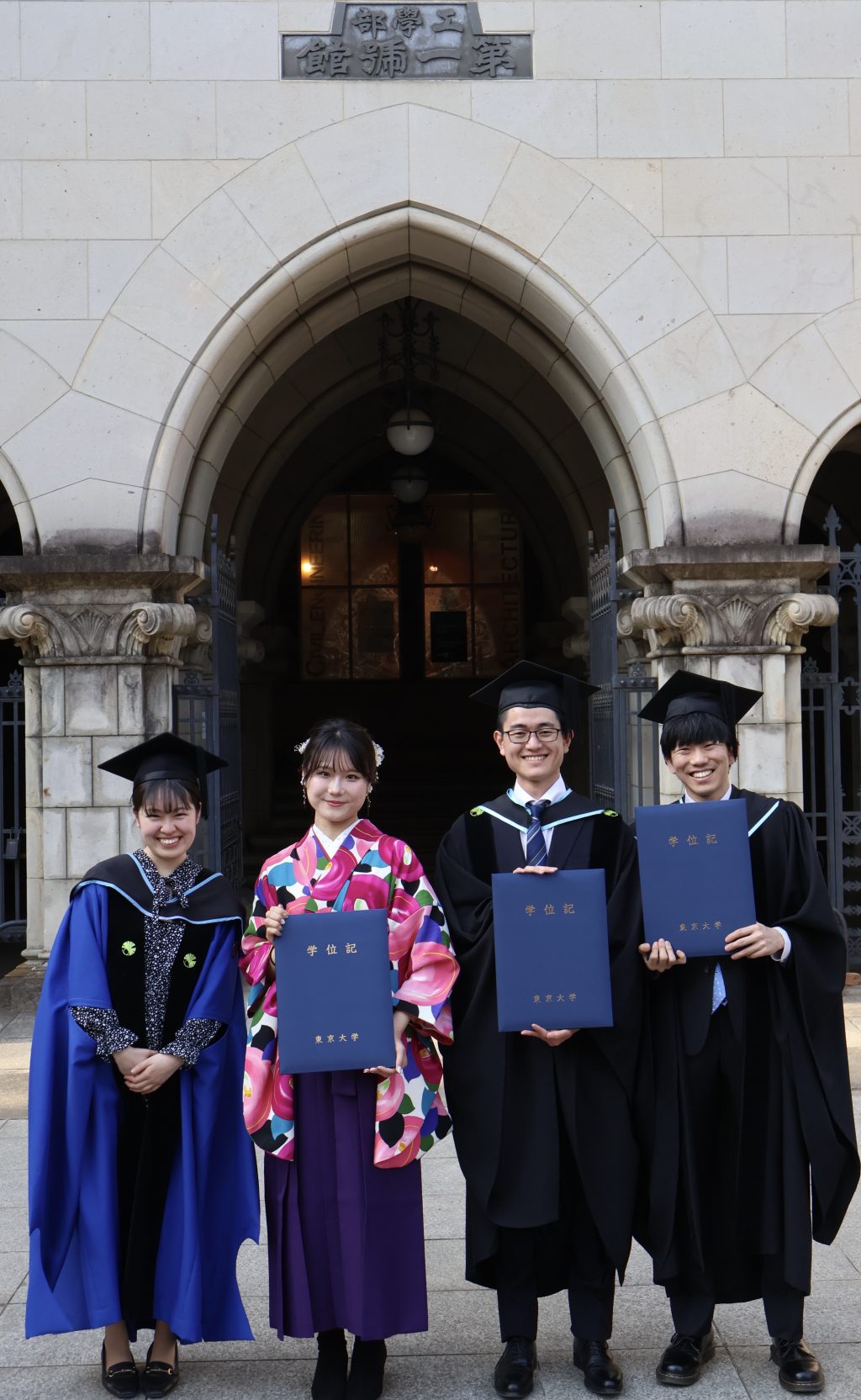
Congratulations on your graduation!
[Uemachi]
Site Visit@Hakodate
We accompanied the Committee on Infrastructure Planning and Management and participated in a site visit to observe transportation infrastructure in Hakodate.
The tour began with an explanation of the Hokkaido Shinkansen at the Japan Railway Construction, Transport, and Technology Agency (JRTT) Southern Hokkaido Office, followed by a visit to one of the construction sites.
Approximately 80% of the tunnel construction between Sapporo and Hakodate has been completed.
However, as reported recently, the project has been delayed due to the underground situation, which has forced engineers to carry out ground improvements and change construction methods.
Next, we visited the Nishi-Onuma section of the Onuma Tunnel in Nanae Town, where we observed the construction of the longest road tunnel in Hokkaido. Getting up close to the tunnel’s excavation face was a rare opportunity. I was particularly impressed by aspects not usually covered in class, such as the on-site facilities for producing concrete to ensure smooth progress and various efforts to reduce environmental impacts.
On the day of the visit, we toured the site in snowy conditions. Observing the work in such severe weather and seeing how closely the construction site was located to residential areas gave me an insight into the unique challenges of construction in heavy snowfall regions and the potential impact that construction delays can have on local development and daily life.
I look forward to seeing how the completion of both the Hokkaido Shinkansen and the expressway projects will connect Central and Southern Hokkaido and bring about changes in the region.

[Uemachi]
On-site Observation of the autonomous truck
This is Mega, a first-year master’s student.
On March 3rd, We had the opportunity to participate in an on-site observation of the autonomous truck demonstration experiment conducted at the Suruga-wan Numazu Service Area.
Through this observation, I strongly felt that autonomous trucks have great potential as a solution to the social issue of the shortage of truck drivers. From a technological perspective, I also learned that, compared to private vehicles—which must operate on unspecified routes under varying conditions—logistics trucks traveling on specific intercity highways offer a higher potential for practical implementation of autonomous driving.
Furthermore, I realized that introducing such new technologies requires new systems and frameworks.
For example, establishing pricing mechanisms and matching systems for the joint operation of autonomous logistics trucks will be an important challenge going forward. Additionally, the question of who bears responsibility in accidents or unforeseen circumstances must be carefully discussed, especially because infrastructure is directly connected to people’s lives and safety.
This site visit provided me with a valuable opportunity not only to see the potential of autonomous driving technology but also to reflect on the challenges and the need for institutional design required to implement such technologies in society.

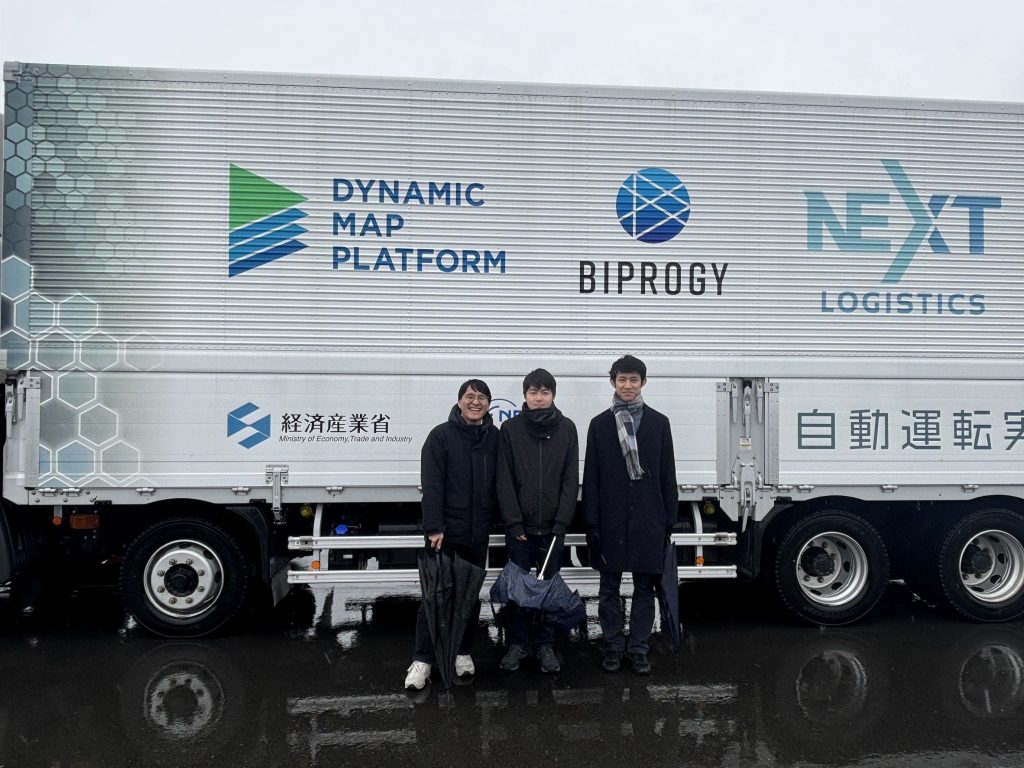 [Mega]
[Mega]
Field Research in Okinawa Metropolitan Area
This is Takeshi Uemachi, a first-year master’s student.
As part of my ongoing research on Poverty and Transportation in Okinawa, which I have continued since my undergraduate thesis, I stayed in Okinawa again for about three weeks to conduct fieldwork.
During the survey, I visited officials in charge of urban and transportation planning as well as welfare support in each municipality, along with local social welfare councils, to hear about the realities faced by people experiencing financial hardship. In addition, unlike the previous survey, I had the opportunity to visit professors from other faculties at the University of the Ryukyus and local children’s cafeterias. These visits helped me deepen my understanding of the poverty issue itself and the broader challenges faced by various groups.
Based on the insights I gained this time, I intend to carefully analyze the relationship between car-dependent society and social exclusion from both qualitative and quantitative perspectives. My goal is to contribute to a better understanding of the situation and propose policies that can help improve it.
I would like to express my sincere gratitude to Professor Kamiya, everyone in the lab, all those who kindly participated in the interviews despite this being a busy time of year, and especially to Professor Fukuda for providing me with this valuable opportunity.
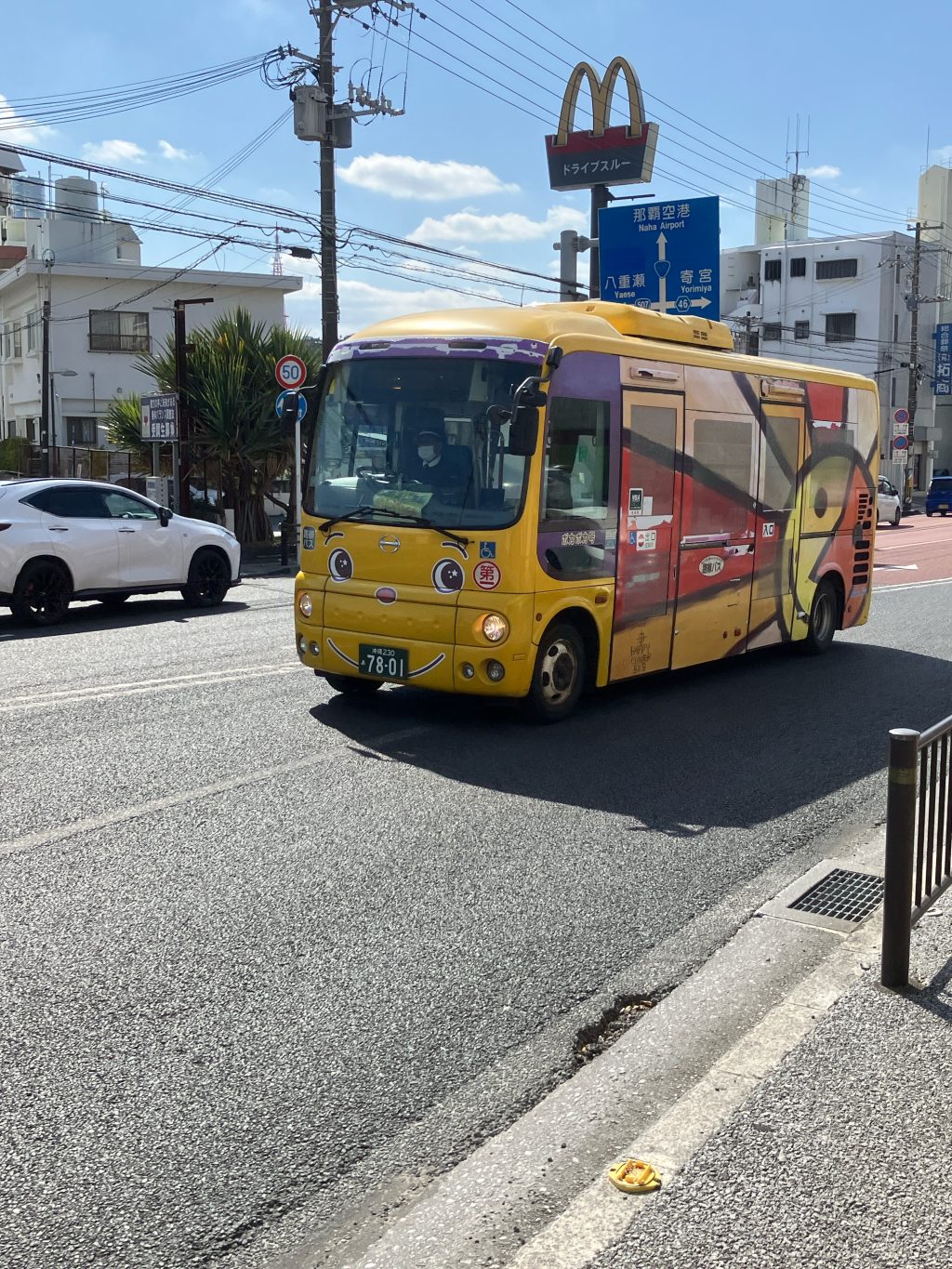
[Uemachi]
Graduation thesis submitted!!!
This is Kanaoka, a B4 student.
Today, I successfully submitted my graduation thesis.
As it was my first time writing a thesis, I am truly grateful for all the support and guidance from my professor and senior students.
I appreciate the other B4 members, Matsunaga and Tanaka who were working hard together till the last moment!
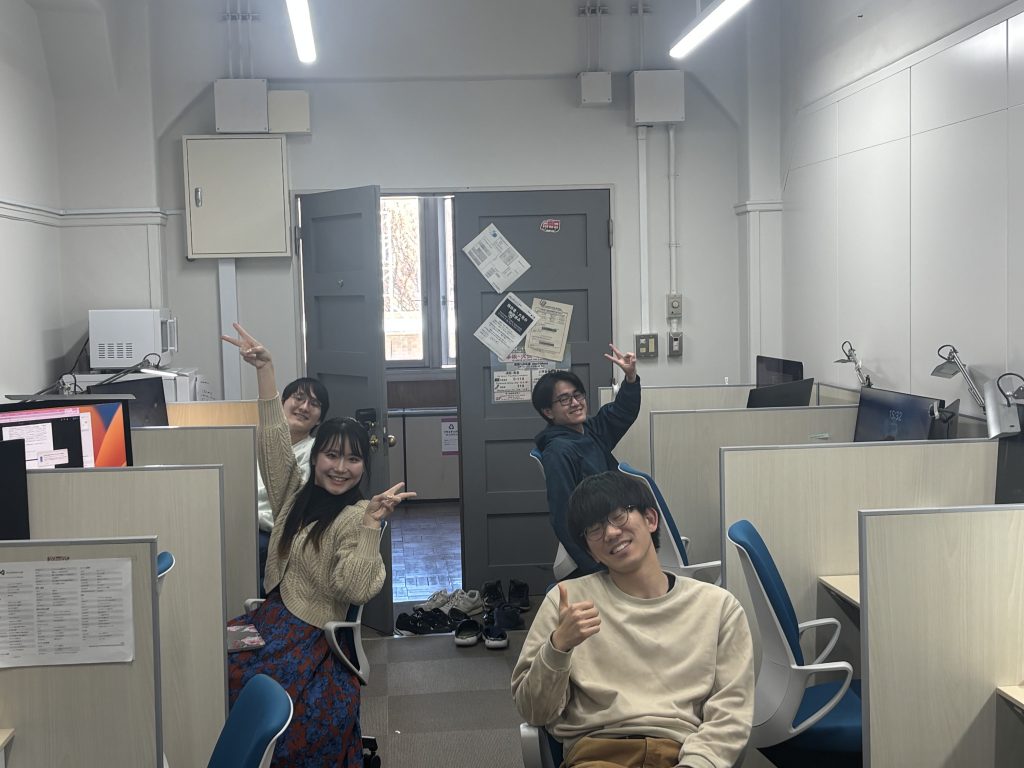
[Kanaoka]
Master’s thesis submitted!
I’m Kaori, M2 student. I submitted my Master’s thesis with a kindful support of Fukuda sensei.
I will do my best till the final presentation on upcoming Tuesday.

[Nakamura]
Musha Shugyo Program 2024
This is Takeshi Uemachi, an M1 student.
I had visited and stayed at the University of Manchester and TU Wien for a month from late November with Musha Shugyo Program, offered by the faculty of Engineering.
At the University of Manchester, I met with Professor Karen Lucas, a leading expert in my research field, Transport-Related Social Exclusion.
She warmly welcomed me, and during our 90-minute discussion, she provided valuable advice on case studies and the direction of my research. It was a truly honorable experience to have this opportunity and receive her encouragement!
At TU Wien, I stayed in the research group to which Dr. Takeru Shibayama belongs, who is an alumnus of our department. During my stay, I engaged in discussions with researchers in the lab, participated in a tour led by individuals with homelessness experience, and visited various locations and facilities related to my research while using local public transport. I was surprised by the high frequency of the service, the convenience of using almost all city transport with a single ticket, and the absence of ticket gates, and found those are designed to make public transport highly accessible. Combined with policies aimed at supporting low-income groups, these efforts create an inclusive urban environment. I also learned about the underlying principles and relevant literature from professors working on related topics.
Dr. Shibayama was extremely supportive, holding weekly meetings with me and guiding me through everything about life in Europe during my first visit. I am deeply grateful for his support. On my last evening, he invited me to the research group’s Christmas party, which was a delightful way to finish my stay.
I would like to express my sincere gratitude to our department and Fukuda sensei for providing me with this enriching opportunity. I am also deeply thankful to my lab members and peers who kept in touch with me during my stay.
I am determined to apply what I gained from this experience to my research and future endeavors, and I will continue striving to achieve my goals!
[Uemachi]
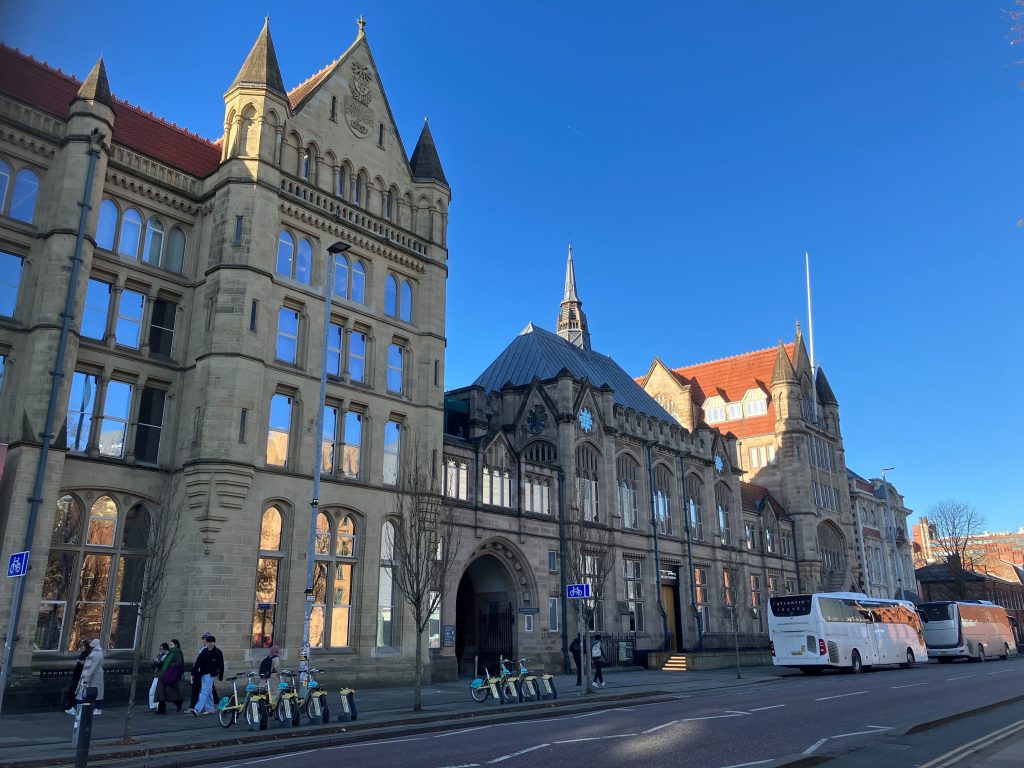
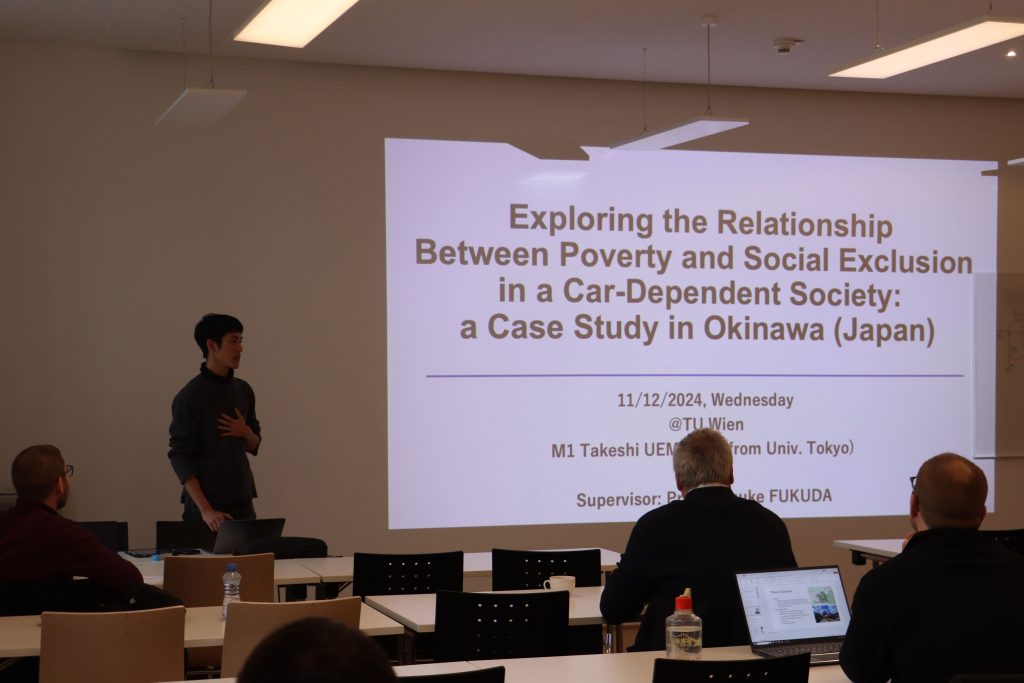
(Photo by Prof. Takeru Shibayama)
THE 28TH INTERNATIONAL CONFERENCE OF HONG KONG SOCIETY FOR TRANSPORTATION STUDIES (HKSTS) @Hong Kong
This is Mega, a M1 student, presenting a paper on “JOINT INFORMATION-ACQUISITION AND TRAVEL CHOICE MODELING OF TOURISTS UNDER TRAVEL TIME VARIABILITY” at the 28th International HKSTS Conference held on December 9-10, 2024. We received questions about setting up correlations between choices and comments about coupon measures. Thank you very much for the insightful comments from Professor Becky Loo and Dr. Nan Zheng.
It was a very exciting two days for me, as it was my first international conference. In addition to the Q&A sessions for the presentations, I had opportunities to talk with various people who are engaged in research during meals and breaks. Through these interactions, I was able to gain a more bird’s eye view of my own research, and I feel that my perspective was further broadened. Thank you very much for providing me with this valuable opportunity.
[Mega]

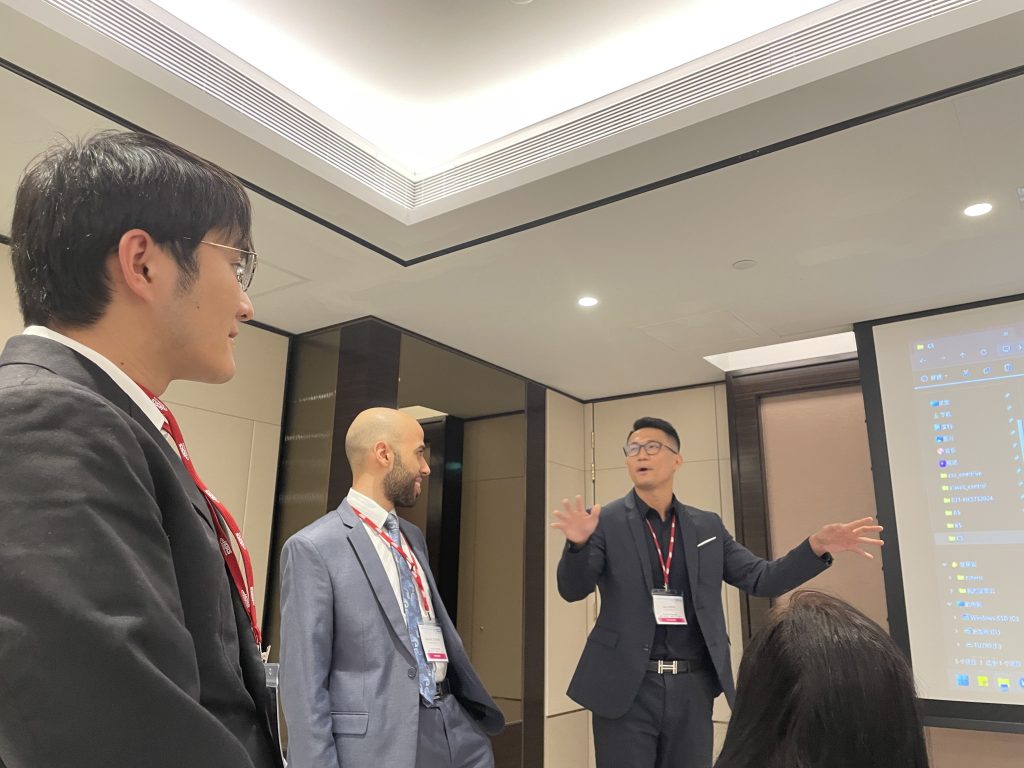
2024 Okamura Cup
The season for the “Okamura Cup” has arrived once again! The Okamura Cup is a softball tournament held between research groups in the Department of Social Infrastructure. The Fukuda Laboratory participates as a combined team of the International Project and Construction Management groups.
This year, many members of the Fukuda Lab have baseball experience, and since the beginning of the year, they’ve been practicing catch whenever they had time. Thanks to their hard work, the team secured an impressive third place overall.
B4 student Matsunaga-kun, who participated for the first time this year, shared his thoughts: “It was nice to play baseball with my seniors, who always impress me with their work in research. They looked just as cool playing baseball.”
The goal for next year is to reclaim the first place, and we look forward to seeing the team’s performance next year.
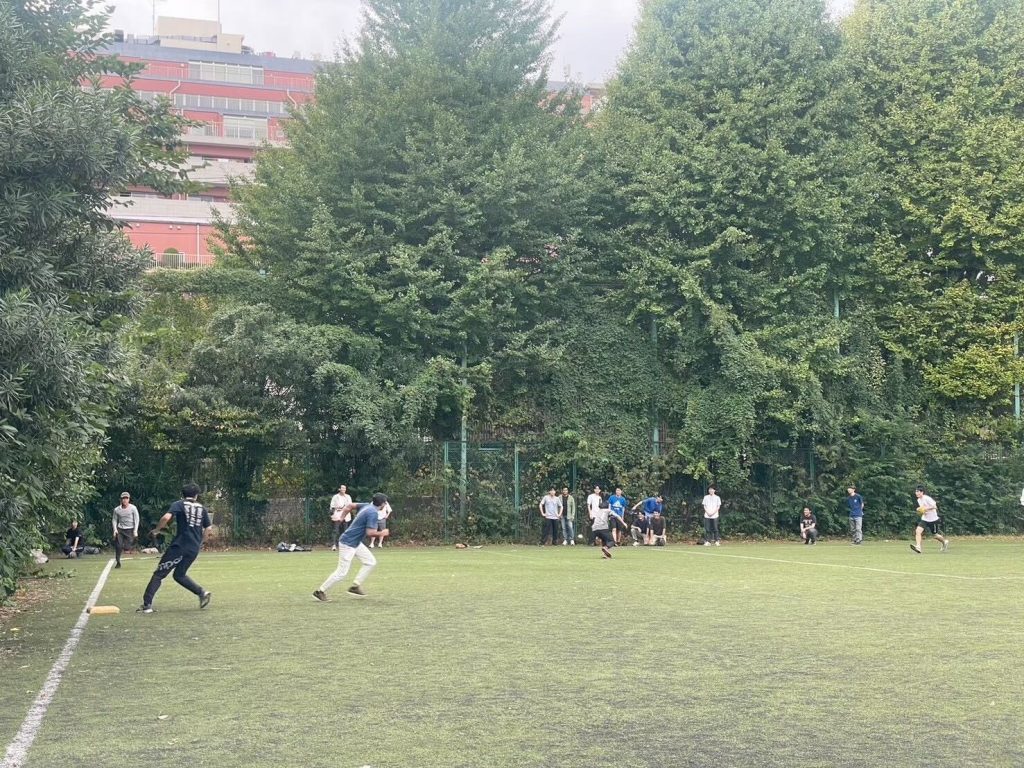
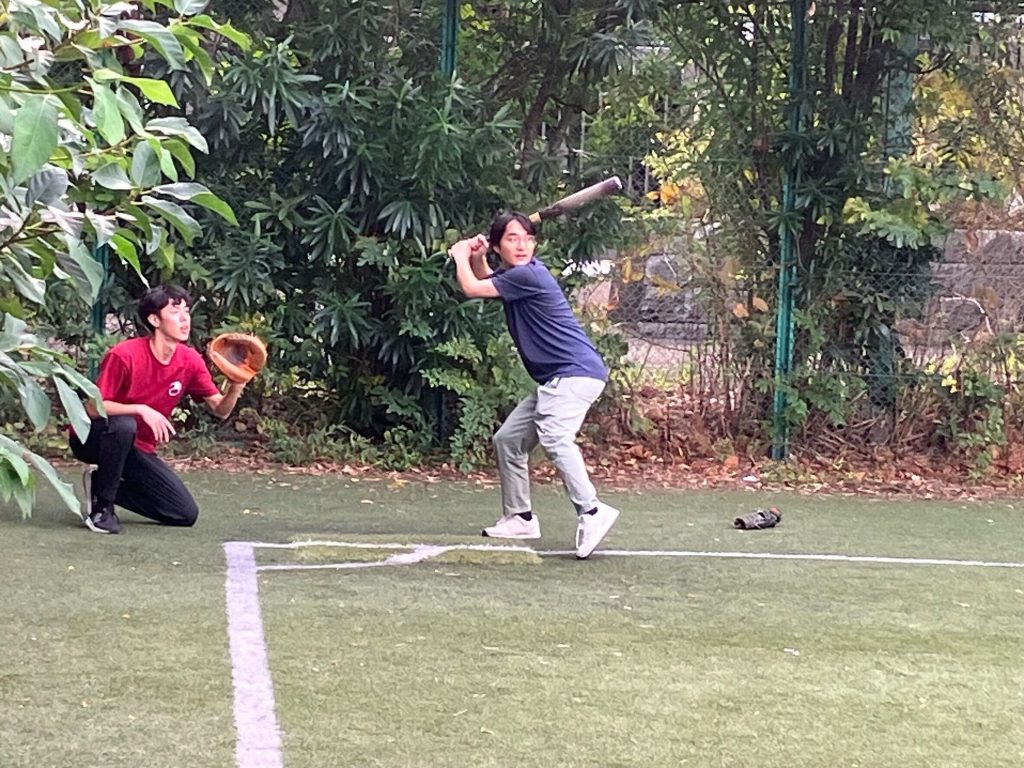
The Keynote Lecture by Dr. Henrik
Recently, Dr. Henrik, who is visiting from Copenhagen, gave a keynote lecture to members of our international project group.
Dr. Henrik is a former colleague of Professor Fukuda from when he was at Denwork University, and this is his fourth visit to Japan.
The keynote lecture, titled “Sustainable Urban Mobility and Local Climate Planning in Europe and Denmark in a Multi-level Governance Context,” focused on how to approach sustainable urban transportation under the framework of climate change mitigation.
A key point of the lecture was the importance of local government initiatives, with a successful example being Denmark’s local government-led project, DK2020. Dr. Henrik also addressed the challenges we face moving forward, particularly how various countries and municipalities with differing interests can align their efforts towards a common goal and achieve the frameworks developed by each.
It was a valuable opportunity to hear his insights, which have deepened our awareness of climate change issues. We are grateful for this invaluable experience.
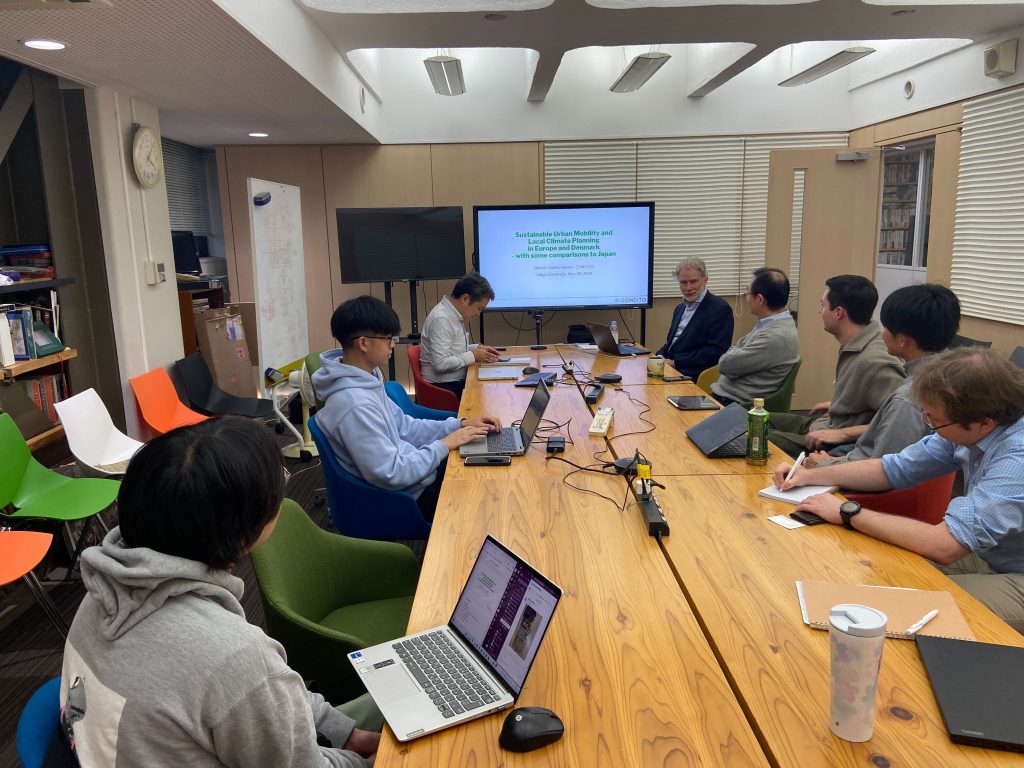
[Nakamura]



